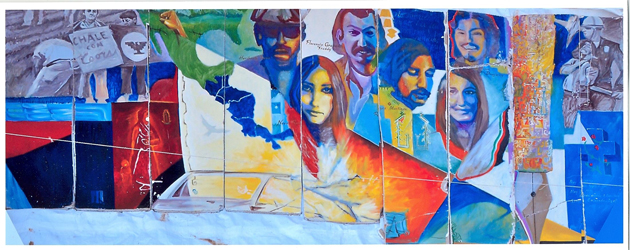
Whenever the topic of civil rights is discussed, the conversation almost always revolves around relations between whites and African Americans. It is interesting that Latinos get forgotten since they are now the largest ethnic minority in the United States. They come from a wide variety of nations. Writing in National Geographic, Hector Tobar notes, “Among the major ethnic or racial identities in the United States — white, black, Asian, Native American — Latino is the most amorphous. Latino people can be African, Mesoamerican, Asian, or white. They are evangelical, Roman Catholic and Jewish.”
People of Mexican descent are the largest group of Latinos. Juan Gonzalez says in Harvest of Empire that “Not only are two of every three Latinos in the United States of Mexican origin, but only Mexicans can claim to be both early settlers on U.S. soil and the largest group of new arrivals.”
Some say, “We didn’t cross the border. The border crossed us.” That is, their families lived “here” before the Pilgrims landed in New England, before there was a United States or a Mexico.
You might not have heard of the war with Mexico from 1846 to 1848. President James Polk believed that the United States had a “manifest destiny” to spread across the continent to the Pacific Ocean. At the end, the United States acquired about one-third of Mexico, including present day Texas, California, New Mexico, Arizona, Utah, Nevada and Colorado. Ulysses S. Grant was a general in the conflict but he would later say that the war was “one of the most unjust wars ever waged by a stronger against a weaker nation.”
If you want to learn more, the University of Colorado Boulder chapter of United Mexican American Students (UMAS) is hosting a three-day series of events from Sept. 13-15 in celebration and reflection of the organization’s 50th anniversary. On Thursday, there will be a screening at Chautauqua Park of a documentary film Symbols of Resistance about the Mexican American movement from the 1970s in Colorado and Northern New Mexico. The film screening will be followed by a multigenerational panel. On Friday, there will be a photo exhibit on Mexican American history at CU’s Norlin Library. On Saturday, there will be a celebratory reception hosted at Su Teatro in Denver. For more information, you can email [email protected] or [email protected]
The CU chapter was born in September 1968. In a recent interview, two founders Phil Hernandez and Juan Maravilla said the CU Boulder campus wasn’t a particularly friendly environment for them. They were “invisible” to white students, faculty and staff. For the first few months, UMAS was a social organization providing mutual aid and comfort. But they soon discovered that in order to help each other, the group had to adopt a political activist orientation as well. They called themselves “Chicanos” (which had been a derogatory term for Mexican Americans) and took pride in their indigenous as well as Spanish heritage.
They helped striking Carnation workers in Brighton and protested the Coors beer company’s discriminatory policies toward minorities. They were able to get a student referendum passed banning the sale of Coors beer on campus. They organized picket lines at Safeway and King Soopers to tell the public about the United Farm Workers’ grape boycott.
In February 1969, UMAS organized a caravan to Fort Lupton to visit the migrant workers’ camp. The migrants lived in one- to two-room shacks, which were arranged in two rows on either side of an open courtyard. The two-room shacks had a kitchenette and living space. There was a shower and an outhouse at each end of the open space flanked by the shacks.
Today, the chapter is known as UMAS y MEXA (Movimiento Estudiantil Chicana/o de Aztlan). They describe themselves as “a multifunctional organization that concentrates on political, social, educational and cultural issues surrounding underrepresented communities.” They concentrate on recruiting and retaining Chicano students and providing community services such as tutoring, tours of the CU campus, middle school and high school college experience panels, and outreach events presenting Chicano culture to the larger community.
The group has two co-leaders: Ashly Villa-Ortega, a senior majoring in international affairs and ethnic studies, and Adan Garcia, a graduate student getting his masters in education. Garcia spent two summers as a counselor/instructor in an UMAS educational program for high school students. Villa-Ortega helped organize campus protests when CU Boulder hosted a nationally televised GOP presidential debate (challenging the racist rhetoric of the candidates) and when Trump was inaugurated.
Trump is hard to avoid if you are a person of color. He claims to want to make America great again. Actually he wants to make raw racism safe again. He and his administration have targeted Latinos with particular venom. It’s an old con game. We white folks are told that a glorious national future awaits us if we crush the racialized others. In the 19th century, a prominent American businessman named Jay Gould said, “I can hire one half of the working class to kill the other half.”
This opinion column does not necessarily reflect the views of Boulder Weekly.














